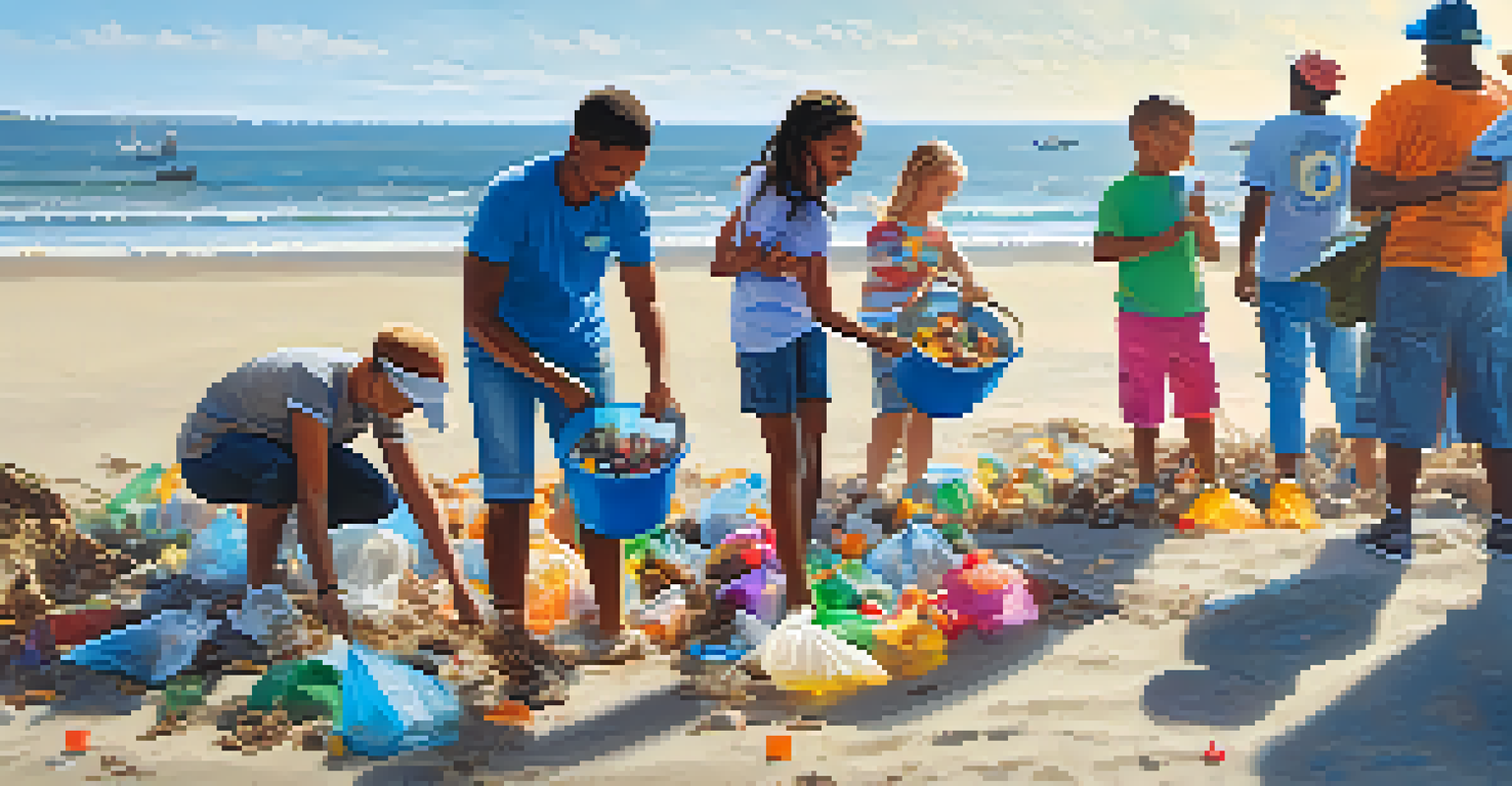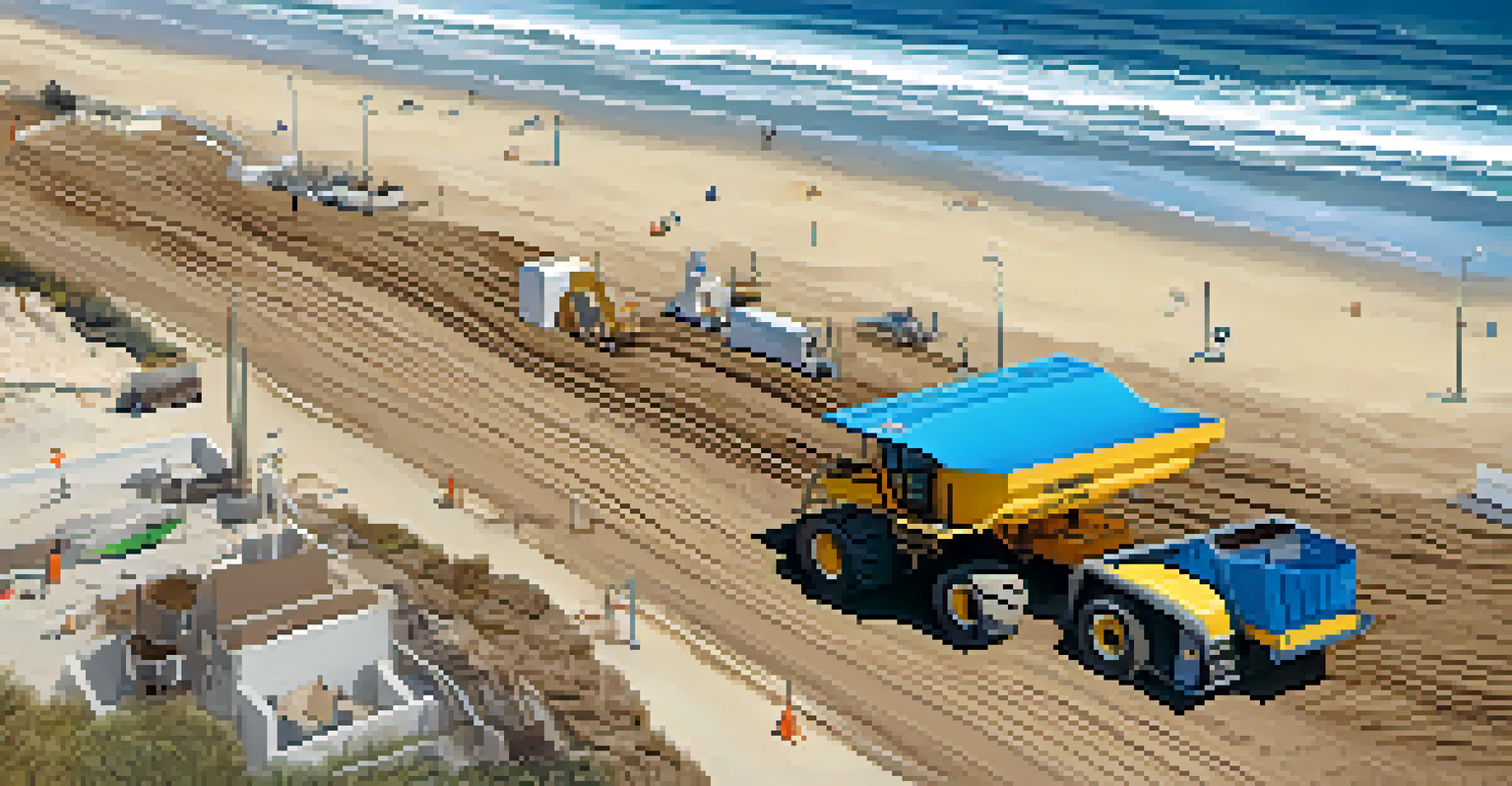San Diego's Coastal Erosion: Causes and Mitigation Efforts

Overview of Coastal Erosion in San Diego
Coastal erosion is a significant issue affecting San Diego's beautiful shoreline. Over the years, rising sea levels and increased storm intensity have contributed to the gradual wearing away of beaches. This natural process poses a threat not only to the environment but also to local communities and economies that rely on coastal tourism.
The coast is a dynamic environment, constantly reshaped by the forces of nature and human activity.
In San Diego, the impacts of coastal erosion are evident at popular beaches like Mission Beach and La Jolla Cove. The loss of sand reduces the beach's recreational space, affecting residents and visitors alike. Additionally, property owners near the coast face increased risks as their land erodes, leading to potential financial losses and property damage.
Understanding the extent and causes of coastal erosion is crucial for developing effective responses. It requires collaboration between scientists, policymakers, and the community to ensure that San Diego's coastline remains resilient and accessible for future generations.
Key Causes of Coastal Erosion in San Diego
Several factors contribute to the coastal erosion crisis in San Diego. One of the primary causes is the rise in sea levels due to climate change, which intensifies the wave action against the shoreline. Additionally, storm surges can exacerbate the erosion process, leading to rapid beach loss during severe weather events.

Human activities also play a significant role in coastal erosion. Construction projects, such as seawalls and jetties, can disrupt natural sediment flow and further destabilize beaches. Urban development in coastal areas often alters the landscape, increasing runoff and reducing natural defenses against erosion.
Coastal Erosion Threatens San Diego
Rising sea levels and increased storm activity are significantly eroding San Diego's beaches, impacting local communities and ecosystems.
Moreover, natural geological processes contribute to the ongoing challenge. Coastal cliffs and bluffs can erode due to weathering and wave action, leading to the loss of land. Understanding these causes helps to create targeted strategies for mitigating their impacts.
Impact of Coastal Erosion on Local Ecosystems
Coastal erosion doesn't just threaten human interests; it also disrupts local ecosystems. Beaches serve as vital habitats for various marine and bird species, and their loss can lead to declines in biodiversity. For instance, nesting sites for shorebirds are often compromised, impacting their populations.
We do not inherit the earth from our ancestors; we borrow it from our children.
Additionally, the erosion of wetlands, which act as natural buffers against storms, can lead to increased flooding and habitat loss. These ecosystems provide essential services, such as water filtration and storm surge protection, that are crucial for both wildlife and human communities.
Protecting these habitats is an essential part of any mitigation strategy. By maintaining the health of coastal ecosystems, San Diego can enhance its resilience to the impacts of climate change and coastal erosion.
Community Awareness and Engagement
Community involvement is key to addressing coastal erosion in San Diego. Local residents and stakeholders can play a vital role in advocating for sustainable practices and supporting preservation efforts. Engaging the community through educational programs and workshops helps raise awareness about the importance of coastal health.
For instance, beach clean-up events not only help remove debris but also foster a sense of ownership among participants. When people understand the challenges facing their coastline, they become more invested in finding solutions. This collective effort can lead to more robust community responses to erosion.
Community Engagement is Essential
Local residents play a crucial role in combating coastal erosion through advocacy, education, and participation in preservation efforts.
Furthermore, collaboration with local organizations and schools can enhance outreach efforts. By involving youth in coastal preservation initiatives, San Diego can nurture a new generation of environmental stewards dedicated to protecting their beaches.
Current Mitigation Strategies in San Diego
San Diego has implemented various strategies to combat coastal erosion. One of the most common approaches is beach nourishment, where sand is added to eroded beaches to restore their natural state. This temporary solution helps maintain recreational spaces while providing time to explore more permanent options.
In addition to beach nourishment, the city is exploring living shorelines, which utilize natural elements like plants and rocks to stabilize coastlines. These solutions not only help prevent erosion but also enhance local habitats, creating a win-win for both the environment and the community.
Policy initiatives also play a crucial role in mitigating coastal erosion. Zoning laws and building regulations can help limit development in vulnerable areas, ensuring that future construction aligns with environmental sustainability goals.
Innovative Technologies for Erosion Management
Advancements in technology are playing a significant role in managing coastal erosion in San Diego. Remote sensing and aerial surveys allow scientists to monitor shoreline changes over time, providing valuable data for decision-makers. Such technology enables a better understanding of erosion patterns and helps prioritize areas in need of intervention.
Moreover, modeling software can simulate the impacts of various erosion control measures, helping planners assess potential outcomes before implementation. This data-driven approach enhances the effectiveness of mitigation strategies while minimizing unintended consequences.
Innovative Solutions for Resilience
San Diego is exploring various strategies, including beach nourishment and the use of technology, to effectively manage and mitigate coastal erosion.
Finally, community-driven apps and platforms that share real-time data about coastal conditions can empower residents to stay informed and engaged. By leveraging technology, San Diego can foster a proactive approach to coastal management and ensure the health of its shoreline.
Looking Ahead: The Future of San Diego's Coastline
As San Diego continues to grapple with coastal erosion, the future of its shorelines depends on collaborative efforts and innovative solutions. Embracing a combination of community engagement, scientific research, and technological advancements will be crucial in creating effective strategies. By prioritizing sustainability, the city can protect its valuable beaches for generations to come.
Furthermore, as climate change accelerates, adaptive management will become increasingly important. This means being flexible and willing to adjust strategies as new challenges arise. Proactive planning will help San Diego stay ahead of the curve and mitigate risks associated with erosion.

Ultimately, the journey towards a resilient coastline is a shared responsibility. By working together, San Diego can foster a culture of conservation that not only protects its natural beauty but also enhances the quality of life for all who call this coastal paradise home.